
I have two fabulous Korean easy tofu recipes that I want to share. These easy tofu recipes are great as last minute side dishes and their mild flavors go wonderfully well with any Korean meal. You can also just have it as a snack or like a salad. And you can use a lot of different vegetables from your fridge to make the dish so it’s very convenient.
So I am sure you heard that tofu is very healthy. Just in case you missed the tofu train; tofu is made from soybean curds, is naturally gluten-free, low calorie, contains no cholesterol and is an excellent source of protein, iron, and calcium (more here). This easy tofu recipe is vegetarian and also vegan. Dubu muchim (두부 무침), as it is how it’s called in Korean, can also be a great banchan (side dish) in a lunchbox/dosirak (도시락). Wow.. I feel like I work for a tofu company… haha..😅
And broccoli, I don’t even have to mention how healthy that is. But in case you wanted to know more, here’s a great article on the health benefits of broccoli along with various links to scientific research on each claim.
Dubu muchim originally comes from Korean temple food. The more traditional Korean ingredients used for this easy tofu recipe are greens such as crown daisies (ssukat 쑥갓), water dropwort (minari 미나리) and cham namul (참나물). But many Korean restaurants outside of Korea started to use more commonly found ingredients like broccoli and spinach for the tofu dish. I will be posting two recipes: one with broccoli and another with ssukat. I also have two slightly different ways of making it – one that’s traditional and another that is not but easier to make.
Now, before we get started, here is a quick guide to the different kinds of Tofu that are sold at Asian markets and how to eat them. Each tofu brand uses different term for describing their tofu firmness so it’s difficult for me to get it right for every brand but hopefully this will help as a general guideline – at least for Korean tofu brands. In general, I found that Korean tofu (brands like Pulmuone) tend to more firmer than other Asian brands with similar firmness level. e.g. Korean “Firm” = most non-Korean brands “Extra Firm”, Korean “Soft” = most non-Korean brands “Medium”
- Silken Tofu (생식용 for eating raw)/Soondubu 순두부/Soon Tofu
- texture: silky smooth and soft texture that resembles a custard pudding
- best way to eat:
- fresh, warm as-is, with soy sauce based dipping sauce or with toppings
- spicy tofu stew (soondubu jjigae)
- mapo tofu
- Soft (찌게용 for stews)
- texture: soft but retains shape better when cut
- best way to eat: add to stews or soups
- Firm (부침용 for frying)
- texture: firm and slightly chewy
- best way to eat: pan fry, salads, deep frying but also in stews and soups
FYI, I basically only buy 2 kinds of tofu. Soon(Silken) Tofu for soondubu jjigae and Firm Tofu for everything else. Even though the label says Soft is for stews, I personally prefer using firm tofu for all my tofu recipes that do not call for silken/soondubu specifically.
Easy tofu recipe with broccoli (Dubu Muchim)
Servings: 2-3 Cook Time: 7 Difficulty: Easy
Ingredients
- 6 oz firm tofu (1/2 pack)
- 2 cup broccoli florets
- 1/4 ~1/2 tsp good quality sea salt or kosher salt
- 1/2 tsp sesame oil
- 1 tsp sesame seeds
- 4 cup water + 1/2 tsp salt for boiling
- Bring water and salt to boiling.
- Cut broccoli into smaller pieces to make 2 cup of broccoli florets.
- Wrap tofu with paper towel or kitchen towel to soak up any excess liquid.
- When water is boiling, flash cook broccoli florets by cooking for 2-3 minutes only.
Cooking Broccoli in boiling water Broccoli should be cooked but still be slightly crunchy. Don’t over cook.
Cooked Broccoli florets for Easy Tofu Recipe - Remove broccoli and cool immediately by adding broccoli to a cold water bath. Drain when cooled.
- Break up tofu with your hands into a crumble.
- In a bowl, mix tofu and broccoli. Season with sesame oil and salt. Taste and adjust salt.
- Sprinkle crushed sesame seeds on top. Crushing sesame seeds really brings the flavor of sesame seeds to life. Because you taste the sesame seeds only when you chew them. 😉 There are machines and gadgets that crush sesame seeds but I found the easiest and cheapest way is to use some finger power. Just grab a pinch and crush them between your fingers!
And there it is! I will also do another post about Dubu Muchim with Ssukgat using a more traditional method of compressing the tofu to extract even more moisture.
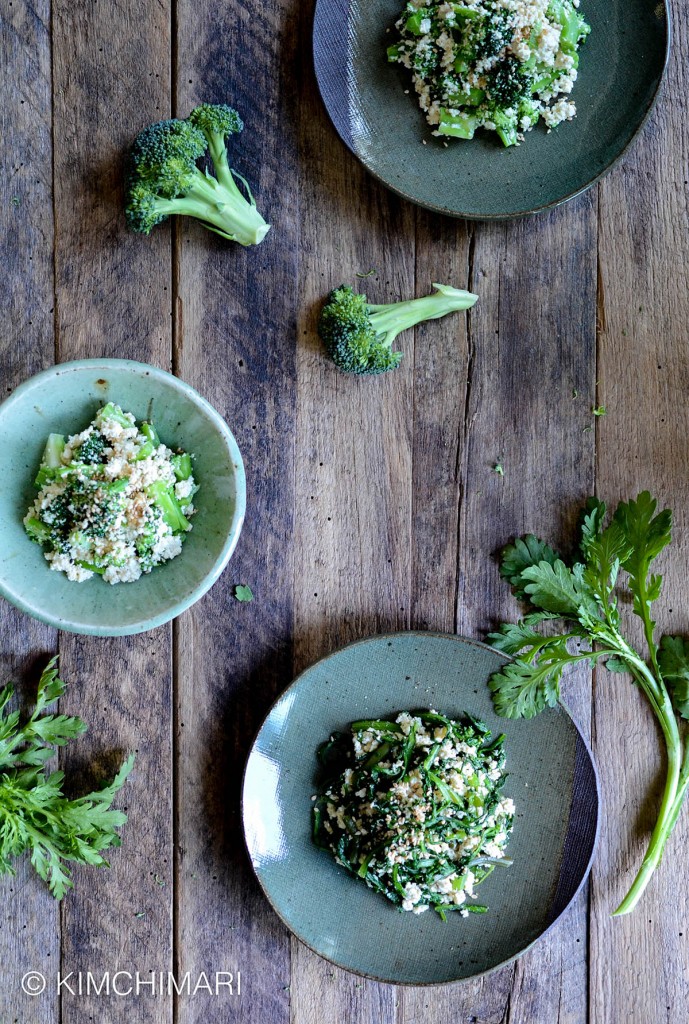
Easy Tofu Broccoli with Sesame Oil (Dubu Muchim)
Ingredients
- 6 oz firm tofu (1/2 pack)
- 2 cup broccoli florets
- 1/4 - 1/2 tsp good quality sea salt or kosher salt (for seasoning tofu and broccoli mixture)
- 1/2 tsp sesame oil
- 1 tsp sesame seeds
- 4 cup water
- 1/2 tsp salt (for boiling water)
Instructions
- Bring water and salt to boiling.
- Cut broccoli into smaller pieces to make 2 cup of broccoli florets.
- Wrap tofu with paper towel or kitchen towel to soak up any excess liquid.
- When water is boiling, flash cook broccoli florets by cooking for 2-3 minutes only. Broccoli should be cooked but still be slightly crunchy. Don’t over cook.
- Remove broccoli and cool immediately by adding broccoli to a cold water bath. Drain when cooled.
- Break up tofu with your hands into a crumble.
- In a bowl, mix tofu and broccoli. Season with sesame oil and salt. Taste and adjust salt.
- Sprinkle crushed sesame seeds on top. Crushing sesame seeds really brings the flavor of sesame seeds to life. Because you taste the sesame seeds only when you chew them. 😉 There are machines and gadgets that crushes sesame seeds but the best way to crush sesame seeds is to just grab a pinch and crush them between your fingers.
Tips & Notes:
Nutrition Information:
- Refrigerate any leftovers. Flavor of sesame oil may diminish after time so add another drizzle of sesame oil right before serving.
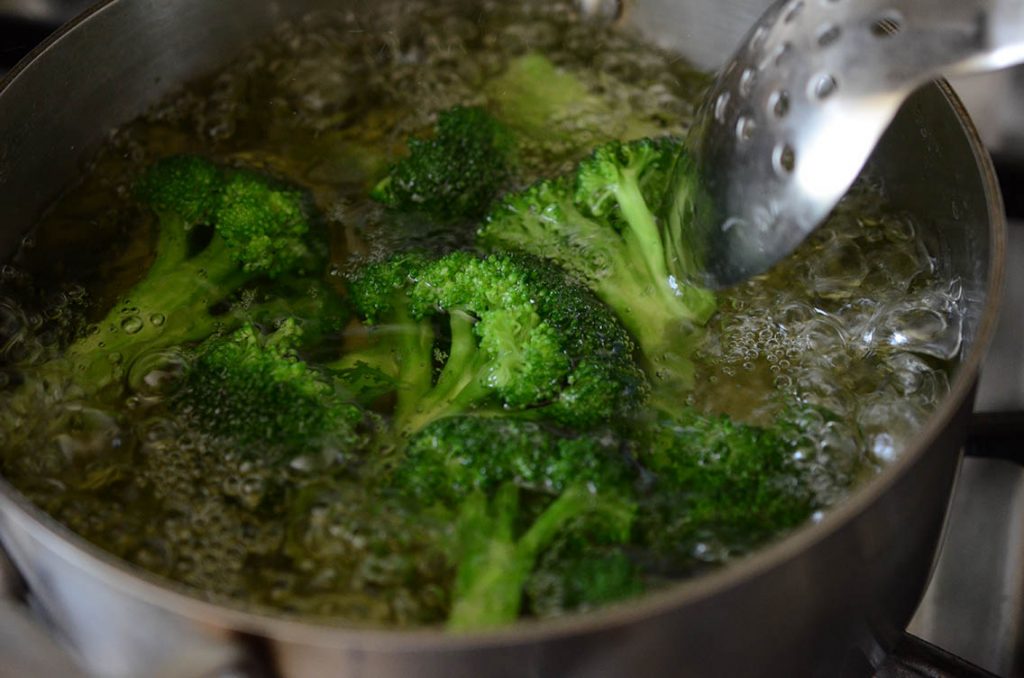
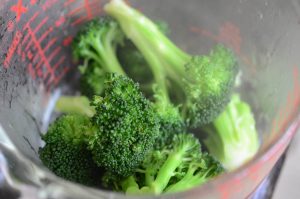
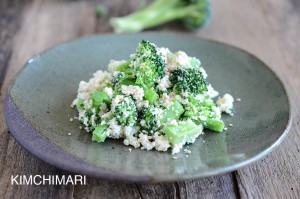


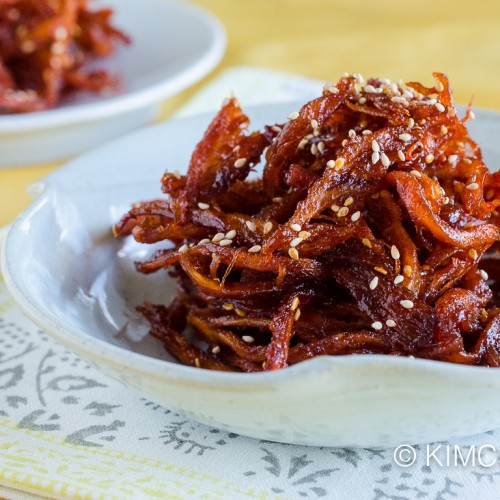
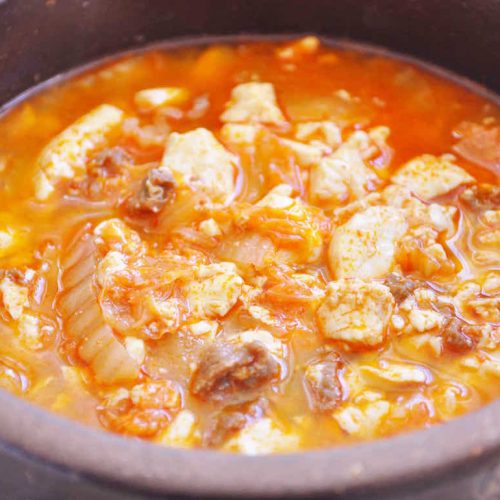
















Very tasty. I ended up adding some cubed eggplant along with the broccoli to boil, and boiled and then drained the tofu before crumbling it. Nice and simple and filling.
Oh eggplant! Interesting! Glad you enjoyed it. Thank you!
Other recipes I’ve seen suggest you boil the tofu for 3-4 minutes. How does uncooked tofu vs cooked differ in taste?
Hi Eunyoung, I don’t think it tastes that much different. Probably the boiled tofu will have a softer texture. Koreans usually like to boil them so the tofu would be warm and/or in the old days when Koreans usually bought the tofu from shijang (old korean market) they usually want to boil it to sanitize it. But these days they are made and transported under modern sanitary conditions so I really don’t see the need for it. Sometimes, ppl want to rinse the tofu of any artificial preservative the tofu company might have put in by boiling them. If you buy organic tofu from a trust worthy company, I really don’t see why you need to boil it but it’s up to you. Thank you!
I boil the tofu to make it firmer!
Nice!! Glad you tried that method!
Absolutely delicious! Will definitely make again!
Hmm, I was suspicious of this recipe being bland. Still I was compelled to make it. So tasty, light and surprisingly savory. I think the sesame oil and seeds do the trick. It’s going to be a regular for my lunches at work!
I’m so glad you tried it and enjoyed it. Thank you so much for the 5 stars.
I just made this as a lunch instead of a side dish because I’ve had a sensitive stomach for the last few days and can’t eat beef. This is simple and delicious. Since I used it as an entree, I used 1 whole pack of Pulmuone firm tofu and 1 lb frozen small chopped broccoli that I dumped in boiling water for a minute. Thank you so much for this recipe!
Oh! Yes, why not – what a great diet friendly, healthy meal idea. Thank you so much for sharing that. Try also some porridges on my site – that may help with your stomach issues. Hope you feel better soon!